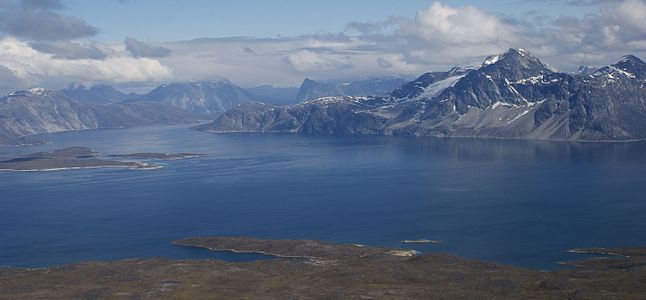High Levels Of Mercury Contamination Found In Greenland Glacier Meltwater
Wider Implications Include Effect On Food Chain
1 Jun 2021 by The Water Diplomat
Nuuk, Greenland

Very high concentrations of mercury have been found in rivers and fjords in Greenland, raising concerns about the wider implications of glacial melting.
In a new study published 24 May by Florida State University, US, and the University of Bristol, UK, scientists describe surprisingly high levels of mercury have led them to consider if and how the mercury could potentially get into the food chain. Greenland’s primary industry is fishing and the country is a major exporter of cold-water shrimp, halibut and cod that is shipped all over the world.
The concentrations are comparable to that found in rivers in industrial China.
The study initially examined three rivers and two fjords in order to obtain an understanding of the quality of the meltwater and the potential effect on coastal ecosystems. In doing so, the scientists found dissolved mercury levels in excess of 150 ng L-1 which is about 15 times typical river concentrations. Alarmingly, particulate mercury was found in very high concentrations of more than 2000 ng L-1.
The research team did not expect to see that level of mercury concentration and the discovery has raised more questions than answers. Jon Hawkings, a postdoctoral researcher at Florida State University said: “That’s leading us to look now at a whole host of other questions such as how that mercury could potentially get into the food chain.”
“We’ve learned from many years of fieldwork at these sites in Western Greenland that glaciers export nutrients to the ocean, but the discovery that they may also carry potential toxins unveils a concerning dimension to how glaciers influence water quality and downstream communities, which may alter in a warming world and highlights the need for further investigation,” co-author Jemma Wadham, of the University of Bristol further commented.
The researchers assert that the source of the mercury is not likely to be the result of human industrial activity. Instead, they suspect that the leaking mercury arises from the natural geochemical properties of the Earth. This idea which may raise some worrying prospects and may have an influence on how scientists and policymakers think about the management of mercury pollution in the future.
Hawkings commented: “But mercury coming from climatically sensitive environments like glaciers could be a source that is much more difficult to manage.”
Photo credit: Wikipedia
